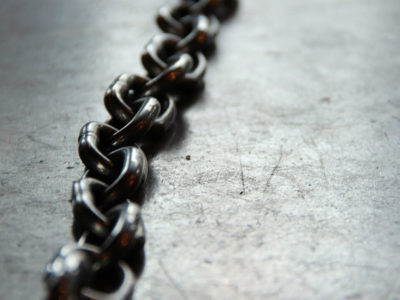We all know that having other websites link back to your site is a powerful way to boost SEO. These backlinks let Google know that your site is a worthy resource and therefore deserves notice.
Outbound links, where you link to another resource, are also good to have. They help SEO more generically than directly, but they’re also good in terms of helping your reader.
But here’s the kicker:
Internal links, or links that point to pages on the same domain, also help with SEO. They help Google find all the pages on your website, and understand and index them. They help with page authority and to establish the information hierarchy of your site. And they’re vital for your site if you want to rank higher on search results.
Plus they help your users navigate your website, which will make them happy to return.
So become an expert with our 101 Guide to Internal Linking:
Establish Your Site
Before we dig too deep into how to do internal linking, you need to make sure you have the following already in place:
- Your site is live with content already in place. That can be one article or many, but you need to have existing content.
- You are constantly adding new content. For internal linking to be most effective, it’s important to be publishing content on a regular basis.
If you’ve got those two components already in place, you can get started with internal linking.
-
Use Anchor Text To Build Links
Descriptive anchor text is best used to build links. Anchor text is what the reader typically sees in a blue color, with the actual hyperlink embedded that takes the user to the linked page.
But not any kind of anchor text will do.
Make sure that the anchor text is descriptive, telling readers what the target link is about. And ensure it’s only a few descriptive words or a sentence, and not a few sentences or an entire paragraph.
Don’t match the anchor text exactly to the link target, and don’t use “click here.” They are both unnatural and search engines are sensitive to that. Don’t use the same anchor text for two different pages, as that confuses the search engines.
And don’t just toss in a line at the end of your post that says: “Click here to read more.”
Take a look at the difference between good and bad anchor text with some examples:
Let’s say we at Spiralytics.com wanted to build an internal link to our article “Mobile Traffic vs. Desktop Traffic: What’s the Difference?”
Good anchor text:
It’s important to understand both your desktop metrics and your mobile metrics.
Bad anchor text:
You might be wondering: Mobile Traffic vs. Desktop Traffic: What’s the Difference?
or
Click here to understand desktop metrics and mobile metrics.
Take the time to write good anchor text that helps the reader understand the phrase and be able to use the link for deeper understanding. The link needs to be relevant to the entire phrase.
-
Use Your Keywords
It’s OK to use keywords in your anchor text.
In fact, you can use some exact matches to keywords in your internal links.
That doesn’t mean to be excessive in the use of keywords, and your anchor text can’t all be the same. But using keywords isn’t a complete no-no like it can be with backlinks.
You want the anchor text and the link to help Google understand what the page is about, and help users navigate your site.
Link Content to Content
This sounds straightforward, but let me explain.
Typically, people think about building links to pages such as the site’s “About,” “Contact,” “Products” or other main pages. But with proper website setup, there should already be enough links built to those pages.
So it’s better to spend your time building links from one content page to another content page. By doing this, you are building a strong internal linking structure, and spreading internal linking.
So put links in your content, linking to other content.
-
Place the Links High on the Page
Adding your links high on the page actually improves your bounce rate, keeping readers on your site longer.
That makes search engines happy with your site, because they see that people are spending a lot of time on your site. That makes your site move up the ranks for that specific keyword search.
That doesn’t mean links should only be at the beginning of a post – they should be throughout. But a few up at the top will help keep your readers engaged and boost your results with search engines.
-
Use Your Most Important Pages To Build Links
There are a few different ways to determine your most important pages.
They can be your pages with the most link authority, in which case you build internal links from the high-authority pages to a new article, an older post you want to boost, or a page that is a priority to boost in search results. The link authority will transfer to the new page.
They may also be pages that convert the most customers, whether that’s by making a purchase, signing up for a newsletter, or whatever you consider a conversion on your page.
In that case, you’re linking from the new (or older) content to that important or high conversion page. This can help with revenue and not just SEO.
You can also use a high-authority page like your Homepage to link from, to help those areas of your site that you want boost. For instance, if your front page is one of your most authoritative pages, create a link to your blog from the homepage.
Sounds basic, but the blog page will link to every blog post. If your homepage already has a high authority, that will ultimately trickle to all your blog posts. If your blog posts need boosting, it’s a simple fix.
2-Step Link Building Plan
Step 1: Start With Existing Content Pages
A great way to add internal links is to go through your older content and update it, including the addition of new, internal links.
Doing updates makes Google’s search crawler notice the content again. That means the updated article could get indexed again and improve in search engine rankings.
It also means you’re accomplishing two important things for your site at once: adding that internal link, and updating content, to help with Google ranking.
Here are two relatively easy ways you can update your content:
- Add a new paragraph or two within the body of older content, with new or additional information, as well as internal links. Include links to older and newer content.
- Add a new paragraph at the beginning of older content, outlining what the updates are to the piece.
Step 2: Get in the Habit of Building Internal Links
Now that you’re doing internal linking, include them every time you write new content.
Do this by including links to at least four or more older articles each time you publish a new one.
This helps search engines consider your older content as “fresh,” which aids in higher ranking.
In other words, that new link along with the readers who follow it refreshes the old content, because it’s obviously still important if readers are going to it.
Be sure when you’re building links in new and older content that you do it when the subject matter has a connection. It should be logical that the two articles are linked.
Remember: the goal is to provide value and a deeper understanding to your users. The bonus is that it helps with SEO.
With this two-step guide to internal linking, you’re linking new content to old content, and also building links from old content to new content.
Final Thoughts
SEO efforts appropriately focus on backlinks and keywords, among other things. But internal links are sometimes a forgotten aspect of SEO.
The reality is that internal links will help Google not only find your site pages, but also index them. It also helps establish your site’s hierarchy and authority.
And most importantly, they will help your users find value in your site, by providing answers to their questions and giving them a deep understanding of the topics they searched.
With our Guide to Internal Linking and the easy steps to implement it, your site will only benefit.






